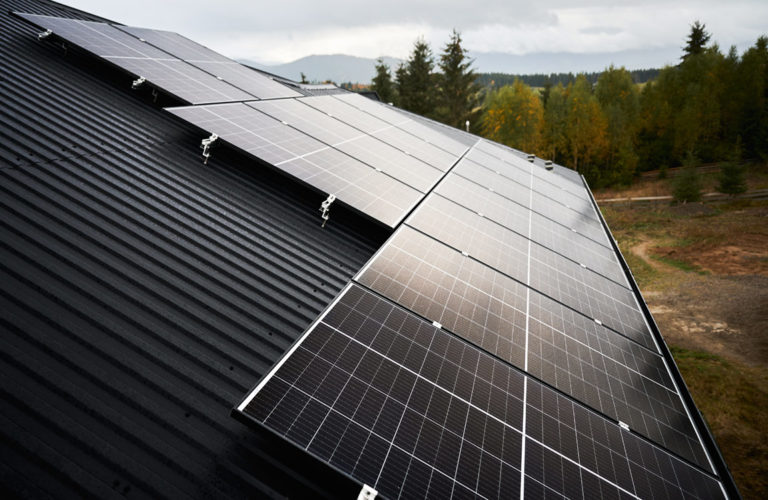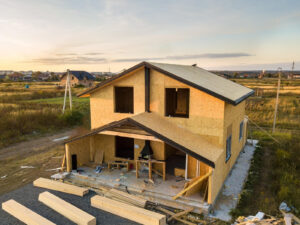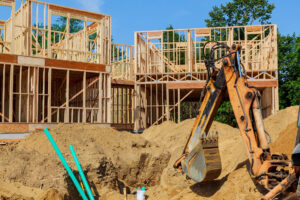
Maximizing Your Custom Home Build With Resale Value in Mind
As you plan your custom home build, it’s crucial to think about its future resale potential—even if that time is years away.
If you're dreaming of building a custom home that combines luxury with sustainability... you're in the right place.
Like many Canadians, you may not have heard the term 'Net Zero homes'. You're likely more familiar with sustainable or eco-home building. Net Zero homes have to follow strict guidelines. The Canadian Home Builders' Association (CHBA) defines Net Zero homes as those that produce as much energy as they consume. This creates a future-friendly solution to standard residential home building.
In Ontario, we're planning on introducing a Net Zero building code for all new houses by 2030. Right now, single-detached homes make up about 69% of all residential energy use across Canada. This new rule means that any new house built will need to be a Net Zero home.
This isn't just great news for the environment. There are big benefits for consumers too. For one, you can be proud that you've built a home that's environmentally responsible. And, in a time of rising energy costs, Net Zero homes save your family money in the long-run. Not to mention, you get to live in a healthy home. Let's learn how to build a house that's great for our planet and for your family too.
Net Zero homes combine innovation, health and sustainability. These homes substantially decrease energy use by being air-tight, insulated, and energy efficient. They have better air quality. They're built to be more durable and sound-proof than standard homes. And, they protect homeowners from rising energy prices.
In Canada there are two ways for a house to be deemed a net zero building. One is to have an Energuide rating of zero gigajoules. Another is to build to the CHBA's ‘Net Zero’ standards.
This guide will help you build your own Net Zero home.
Imagine a home where sustainability meets modern luxury. Fresh air circulates through light-filled rooms and your home's temperature is always... well, perfect. This is what it's like living in a Net Zero home. Every element is designed with your comfort and the planet's well-being in mind. You won't have to compromise on style or modern conveniences. In fact, you'll be leading the future.
Net Zero homes use renewable energy as their primary energy source. The most popular system is solar panels, but wind turbines can also be used. A qualified Net-Zero custom home builder will create a plan to efficiently use renewable energy. They'll focus on the placement of solar panels, turning natural sunlight into a powerful resource... So, your home becomes a self-sustaining ecosystem.
Net Zero homes use advanced wall systems and airtight construction. This keeps high quality air in and cold or hot air out. Features like triple pane windows and insulated walls are common. They maintain a comfortable indoor climate year-round. Say goodbye to the need for additional heating or cooling. This tight envelope is crucial for preserving the energy produced within the home.
Geothermal heating and air source heat pumps are a big part of a Net Zero home's high-efficiency system. Air source heat pumps (ASHPs) absorb heat from the air. Geothermal source heat pumps (GSHPs) absorb heat from the ground. Both are great alternatives to the fossil fuel-powered furnaces used in traditional homes.
They provide sustainable heating and cooling. Using the stable temperatures of the earth and the air, they use far less energy. Bonus: They're also cleaner and more affordable than traditional heating and cooling systems.
We can all agree that Net Zero homes are better for the environment. But, they also have a big, positive impact on homeowners' wallets. Upfront costs can seem high; however, they're balanced by long-term savings.
Net Zero homes are also built to a higher standard than their counterparts. They're made with better windows and more insulated walls and roof. This will undoubtedly cut down on future repairs and replacements.
Net zero energy homes aim to reduce energy bills to nearly zero. When you're no longer reliant on outside energy sources, you're laughing all the way to the bank. You'll likely see your utility bills fall to an all-time low. And, you'll be protected from future energy price increases. The cumulative impact of this can mean huge savings!
The Government of Canada wants to encourage Canadians to go Net Zero. There are various tax incentives and rebates designed to promote sustainable building. These financial benefits make it more accessible to adopt green building solutions. Incentives and grants change often, but here is a snapshot of a few programs:
Canada's Mortgage and Housing Corporation (CMHC) is Canada’s national housing agency. Their Eco Plus program allows homeowners to apply for a 25% mortgage insurance premium rebate. You must be CMHC insured and be building a home that meets their criteria. This program makes the dream of owning a Net Zero home more real.
PACE (Property Assessed Clean Energy) is a financing tool that makes building sustainably more affordable than ever before. This innovative concept is more popular in the US than in Canada. But it's gaining momentum here.
PACE allows property owners to borrow money to finance renewable energy home builds. They repay the loan through a surcharge on their property tax bills. This allows them more time to pay back the loan. It also helps to offset the high upfront costs with a Net Zero home build. Another big benefit is that the loan is attached to the property rather than the property owner. So, it in no way affects the credit of the property owner.
In essence, PACE makes it possible for more people to build energy efficient homes.
When you're constructing a custom Net Zero home, you want to work with a builder that knows the landscape. A good partner starts with someone who understands and embraces your vision. And you need someone who has the expertise to turn that dream into a reality.
First, you want to work with a custom home builder who's registered with the Canadian Home Builders' Association (CHBA). The association works to ensure the integrity of the industry. Second, you want to find someone who is a qualified Net Zero home builder. Most qualified builders will display their Net Zero credentials on their website. These custom home builders have gone through extensive education and training.
(insert Net Zero logo)
Consumers are becoming more environmentally-aware. Some home builders will try to profit from this. Greenwashing is when a custom home builder makes claims but does not have the actions to back them up. Examples of this could be a builder claiming to be sustainable or eco-friendly, with no data to support this. That's why it's important to work with a Net Zero accredited custom home builder.
Before you decide on a Net Zero home builder, it's crucial to ask the right questions. Questions like:
These questions are the key to understanding how their capabilities will help you meet your goals.
Kennedy + Kenel are pioneers in the Net Zero home building sector. We've dedicated over two decades to crafting homes in Oakville, Burlington, Ancaster and beyond. As a Net Zero Home certified builder, Kennedy + Kenel combine luxury and efficiency. We ensure that every project meets the highest standards of sustainability.
We are dedicated to building homes for the future. We go beyond code. We stay on the bleeding edge of building technology. And we service the heck out of our customers. With Kennedy + Kenel you can rest assured knowing you're in the best hands.
Going Net Zero isn't just about the Earth. It's not even just about you and your family. It can have a wider impact on the community around you.
You are leading by example. Your Net Zero home serves as a beacon of change within your community. It inspires others to consider sustainable living practices and the benefits they bring. What a delight it is to know that you can encourage others to take steps towards reducing their environmental impact.
Your journey towards a bright future begins with the decision to build a Net Zero home.

Imagine a home that gives back as much clean energy as it consumes. Imagine drastically reducing your carbon footprint and utility bills. This is the promise of owning a Net Zero home. At Kennedy + Kenel we've set the benchmark for beautiful & sustainable custom homes.
We want to help you bring your dream of living in a Net Zero home to life. We'll ensure your new home meets the highest standards of sustainability and luxury. By choosing Kennedy + Kenel, you're investing in your future and contributing to a healthier planet. Take the first step today and discuss how we can transform your vision into reality.

As you plan your custom home build, it’s crucial to think about its future resale potential—even if that time is years away.

Dreaming of building your perfect home? Before you jump into land shopping, it’s important to first consult with a builder.

If you are considering building a custom home in the GTA, you've likely encountered the term "building envelope." But what exactly is it?
We value your privacy
We use cookies to recognize visitors and remember their preferences. To learn more about these methods, including how to disable them, view our Cookie Policy.